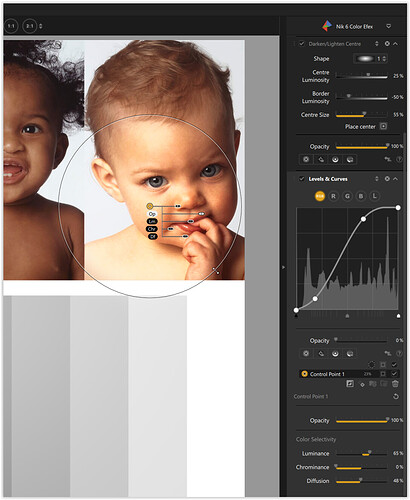Since Nik 6 we have both, on the pic as well at the RHS – but it took DxO about 2 years …
And @Joanna, we don’t need everything to be right on the pic.
.
.
note
The (only) Local Adjustments in the Nik tools are Control points and Control lines,
while a coupe of tools work selectively by design.
.
… how to integrate the Tone Curve with a Control Point

